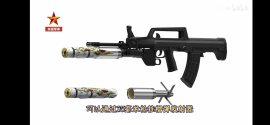"Conventional US combat arms units usually served as battlespace owners" is a euphemism, the reality is conventional troops in Afghan difficult to operate oustside the base even during the day, after 2006. Restrepo and The Hornet's Nest both document the plight of US infantry well. After 2010, only SOF is capable of conducting attack missions at night, conventional units are basically stuck in bases and outposts, pretend they still control the surrounding area. The situation of the US troops in Iraq during the same period was not much better.In Iraq and Afghanistan, conventional US combat arms units usually served as battlespace owners. Their job was to hold and secure territory. Some of that obviously entailed clearing out insurgents, but such operations usually occured during the day.
Generally speaking, the only units that went out at night on a regular basis (i.e. at least a couple times a week) with the expectation of making contact were JSOC strike teams chasing HVTs. CJSOTF units conducted offensive night operations too, but not with the same frequency.
Though none of that obviously stopped indigenous forces from picking a fight with US forces at night.
- - - - - - -
While the US is generally speaking ahead of the rest of the world in night combat, that advantage does not mean every American infantryman is reasonably trained and prepared to fight at night.
In all fairness, much, if not most of "owning the night" are founded upon CAS and ISR capabilities provided by airborne assets, as well as surgical strike capabilities that can be deployed at night with relative ease and frequency.
Last edited:


